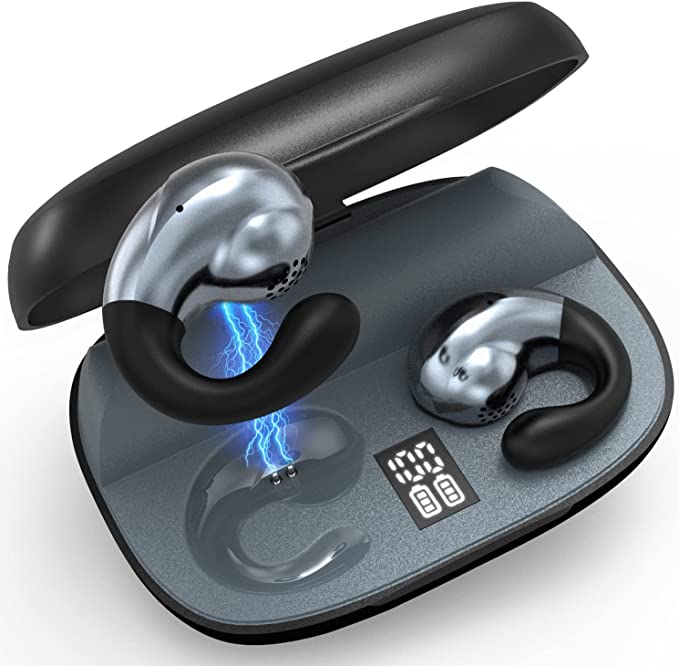Runar RNR1 Engineering Review: Why Your Running Headphones Should NOT Cancel Noise
Update on Dec. 7, 2025, 8:41 p.m.
In an era where audio brands race to achieve “total silence” with Active Noise Cancellation (ANC), the Runar RNR1 makes a defiant, contrarian statement: Silence is dangerous.
For the committed runner, the 40-gram Runar RNR1 is not just a playback device; it is a piece of safety equipment. While tech enthusiasts might scoff at its “retro” neckband design and lack of aggressive isolation, biomechanics experts and marathon veterans recognize these traits as deliberate engineering choices. Let’s dismantle the physics of why this form factor survives—and thrives—on the pavement.

H4 The Physics of Situational Awareness
The primary function of the RNR1 is Acoustic Transparency without the need for digital processing. Unlike modern “Transparency Modes” that use microphones to pipe in synthetic ambient sound, the RNR1 achieves this physically through its On-Ear (Supra-aural) design (Thesis).
By resting on the outer ear rather than plugging the ear canal, the RNR1 leaves the natural acoustic path partially open. This allows high-frequency environmental cues—tire friction on pavement, a bicycle bell, a dog’s bark—to bypass the driver and reach your eardrum directly (Physics).
So What?: This means zero latency in hearing a threat. Digital transparency modes can introduce millisecond delays or distort spatial directionality. With the RNR1, your biological radar remains unhackable.
H4 Erasing the “Thump”: The Occlusion Effect
Every runner who has worn sealing earbuds knows the annoyance: Thump. Thump. Thump. This is the Occlusion Effect—low-frequency vibrations from your footstrikes travel through your skeleton and are trapped in the sealed ear canal, amplifying the sound of your own body (Physics).
The RNR1’s open design functions as a pressure relief valve. Because the ear canal is not sealed, these bone-conducted vibrations can escape into the air rather than bouncing against your eardrum. This eliminates the “thumping” sound and the sensation of underwater breathing, allowing you to focus on your cadence rather than your internal acoustics.
H4 Mechanical Stability: The Clamping Force Equation
Why a neckband? Gravity. True Wireless Stereo (TWS) earbuds rely on friction inside the ear canal to fight gravity and sweat. Eventually, sweat acts as a lubricant, and friction loses.
The RNR1 uses a Pre-Tensioned Memory Wire in the neckband to apply a lateral Clamping Force (Thesis). This creates a mechanical lock around the temporal bone and the back of the skull. The headset effectively holds onto you, rather than you holding onto it.
However, this engineering choice comes with a variable: Head Width. User JSJ noted the fit was “tight on my ears out of the box.” This is a predictable outcome of a fixed-radius spring acting on variable-diameter heads.
Field Note: The memory wire is thermoplastic. If the clamping force is causing a headache, you can carefully flex the band outward and hold it for 10-20 seconds to relax the tension. Do this incrementally—you want it just tight enough to not bounce, not tight enough to pinch.

H4 Sweat Management: The Contact Patch
Sweat is the enemy of electronics. In-ear monitors often fail because sweat pools directly inside the charging contacts or the nozzle mesh. The RNR1’s geometry moves the critical components (battery and logic board) to the back of the neck or the outer ear hooks, away from the heavy sweat zones of the ear canal and face (Nuance).
While the manufacturer claims it is “Sweatproof,” the lack of a certified IP rating (e.g., IPX7) suggests reliance on Conformal Coating on the internal PCB and physical distance from sweat accumulation points. This is effective for running (rain/sweat) but implies you should not rinse them under a faucet.
H4 The Sonic Compromise
We must address the elephant in the room: Bass. Without a seal, you lose pressurization. The RNR1 will naturally roll off sub-bass frequencies (<60Hz). You will not feel the “drop” in an EDM track like you would with sealed buds.
However, for running, this is often a feature, not a bug. Excessive bass can mask traffic noise. The RNR1 is tuned for Mid-Range Clarity (Data), making it exceptional for podcasts, audiobooks, and high-cadence music where the beat (140-180 BPM) lives in the mid-bass/lower-treble range.
TCO Analysis (Total Cost of Ownership) * Initial Cost: Budget-friendly (<$30 typical). * Maintenance: Low. No silicone ear tips to lose or replace. * Longevity: The mechanical hinge/flex point is the likely failure mode after 1-2 years of daily flexing. * Safety Value: Priceless. Avoiding one traffic accident pays for the device a million times over.
The Runar RNR1 is not for audiophiles sitting in a leather chair. It is for the asphalt warrior who values their life and their stride over sub-bass extension.






























